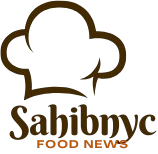In order to make that choice, they need to develop the capability to tell apart between products. As long because the worlds of consumption and manufacturing are separated, product quality have to be guaranteed by formalised quality techniques or by appropriate industrial patterns that allow the identification and communication of high quality traits.
As a results of EU hygiene guidelines, in the Eighties Italian health authorities began to forbid the manufacturing of raw milk cheese, a conventional product discovered in many Italian communities. In different phrases, ‘uncooked milk’ was officially identified as a ‘safety risk’ and as a result turned a marker of ‘dangerous high quality’12. As part of its campaign, Slow food mobilised specialists in several fields, encouraging researchers to provide you with security conditions for uncooked milk. Finally, by giving a brand new interpretation to the rules utilized by national authorities, the campaign succeeded in re-instating raw milk on the condition that certain precautionary guidelines have been followed. According to the semiotic mannequin above, the presence of Slow Food instead producer of symbols opens up an alternate channel of communication about food.
This article suggests a theoretical framework for the evaluation of high quality development and energy distribution processes by the actors involved. The article highlights the importance of communication processes, in addition to the need to control the flow of communication and the development of meanings in order to stabilise the place of local food inside the food system. With specific reference to local food, the article reveals the distinctions between local, locality and localist food when it comes to stakeholders, communication processes and advertising methods. Locality food is the results of a separation between the world of manufacturing and the world of consumption. Consumers and producers neither belong to the same group nor, in most cases, are they personally acquainted. Consumption may be far removed from production, and stems from a reflexive choice. Consumers choose locality merchandise because they understand them as coming from a certain place and possessing properly outlined and differentiated characteristics.
This makes it potential to communicate with customers and citizens about the link between raw milk, tradition, food security and organoleptic quality, so putting strain on legislative and health authorities to alter their position. As a part of its campaign, Slow Food mobilised producers, specialists in sensory high quality, researchers and customers, in a bid to alter hygiene guidelines and their interpretation by nationwide authorities. Zoe Weil believes compassion and respect can be nurtured, and she’s taught lots of of hundreds of people how to honor the relationship between human beings and animals, the Earth, and each other.
Local food is the expression of a local community, consisting of customers and producers alike. Local food is especially circulated via traditional circuits, and is principally chosen as a result of it forms a part of odd food habits. A product’s awareness of quality characteristics and methods of preparing and consuming it, are part of ‘local data’, produced and reproduced throughout the group. There are few alternatives to compare local with non-native food, and products coming from exterior the neighborhood may be perceived with suspicion as they battle with native food habits. Such an strategy is adopted by Nestle which reconstructs the ‘food pyramid’ story and the battle to inform customers of nutritionally appropriate norms of consumption, or the evolution of so referred to as ‘well being claims’. One excellent example of the politics of quality in the local food context relates to using raw milk in cheese manufacturing in Italy.
